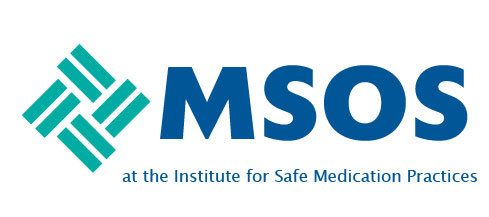Resource Page
Nostrum Laboratories, Inc. Issues Voluntary Nationwide Recall of Sucralfate Tablets USP 1 Gram Within Expiry
Closed Suction Catheter Recall: Avanos Medical, Inc. Removes Ballard Closed Suction Systems Due to Risk of Non-Sterility
Infant Breathing System Recall: AirLife/Vyaire Removes Infant Heated Wire Circuits Due to Risk for Inadvertent Adapter Disconnection During Ventilation
Broselow Pediatric Emergency Rainbow Tape Recall: AirLife Removes Certain Broselow Pediatric Emergency Rainbow Tapes due to Misprinted Information
Cybersecurity Vulnerabilities with Certain Patient Monitors from Contec and Epsimed: FDA Safety Communication
Early Alert: Infusion Pump Software Issue from Baxter
Extended-Release Stimulants for ADHD: FDA Drug Safety Communication - FDA Requires Expanded Labeling about Weight Loss Risk in Patients Younger than 6 Years
Early Alert: Blood Pump Controller Issue from Abiomed
Sandoz Inc. Issues Voluntary Nationwide Recall of One Lot of Cefazolin for Injection Due to Product Mispackaging
mRNA COVID-19 Vaccines: FDA Safety Communication - FDA Approves Required Updated Warning in Labeling Regarding Myocarditis and Pericarditis Following Vaccination
Angiographic Catheter Recall: Cook Removes Beacon Tip Angiographic Catheters due to Tip Separation
Early Alert: Esophageal pH Monitoring Capsule Issue from Medtronic
Import Alerts for Certain Olympus Medical Devices Manufactured in Japan - Letter to Health Care Providers
Anesthesia Delivery Systems Recall: GE HealthCare Issues Correction for Certain Carestations due to Risk of Ineffective Ventilation When Used in Volume Control Ventilation (VCV) Mode
Medical Procedure Kits Correction: Medline Industries, LP Issues Correction for Medline Procedure Kits Containing Medtronic Aortic Root Cannula due to Potential Excess Material in Male Luers
Resuscitation System Recall: ZOLL Circulation, Inc. Recalls AutoPulse NXT Resuscitation System Due to a Failure Code That May Stop Compressions or Deliver Inadequate CPR
Transderm Scōp (Scopolamine Transdermal System): Drug Safety Communication - FDA Adds Warning About Serious Risk of Heat-Related Complications with Antinausea Patch
Understanding the evidence for artificial intelligence in healthcare
Scientific studies of artificial intelligence (AI) solutions in healthcare have been the subject of intense criticism—both in research publications and in the media.1–3 Early validations of predictive algorithms are criticised for not having meaningful clinical impact, and AI tools that make mistakes or fail to show immediate improvement in health outcomes are heralded as the first snowflakes in the next AI winter (a period of decreased interest in AI research and development). Scientific evidence is the language of trust in healthcare, and peer-reviewed studies evaluating AI solutions are key to fostering adoption. There are over two dozen reporting guidelines for AI in medicine,4 and many other consensus statements and standards that offer recommendations for the publication of research about medical AI.5 Despite such guidance, the average frontline clinician still struggles in interpreting the results of an AI study to...
Workforce well-being is workforce readiness: it is time to advance from describing the problem to solving it
‘We need bold, fundamental change that gets at the roots of the burnout crisis.’- US Surgeon General Vivek H. Murthy, MD, MBA.
Well-being was brought into clearer focus during the COVID-19 pandemic, during which the prevalence of healthcare worker (HCW) emotional exhaustion increased from 27%1 to 39%.2 Currently, there is not a coordinated effort to ensure HCW well-being interventions meet minimum standards of feasibility, accessibility and methodological rigour. In this issue of BMJ Quality and Safety, Melvin et al assessed perceptions of physician well-being programmes by interviewing physicians and people involved in these programmes.3 As is often the case with any real-world application of science, there are substantial gaps between the programmes as intended and the programmes in practice. The authors conclude that the ‘persistence of poor well-being outcomes suggests that current support initiatives are suboptimal’.
The key is understanding what is suboptimal....
